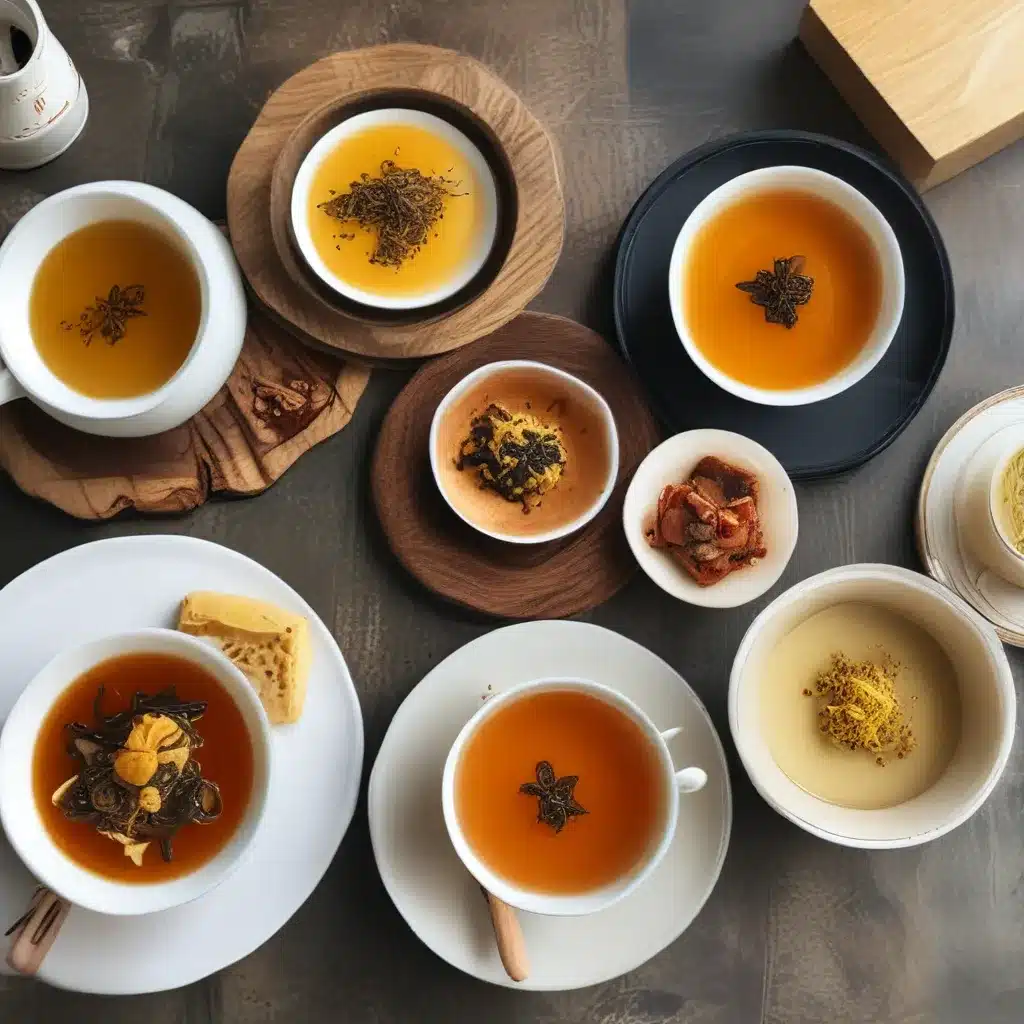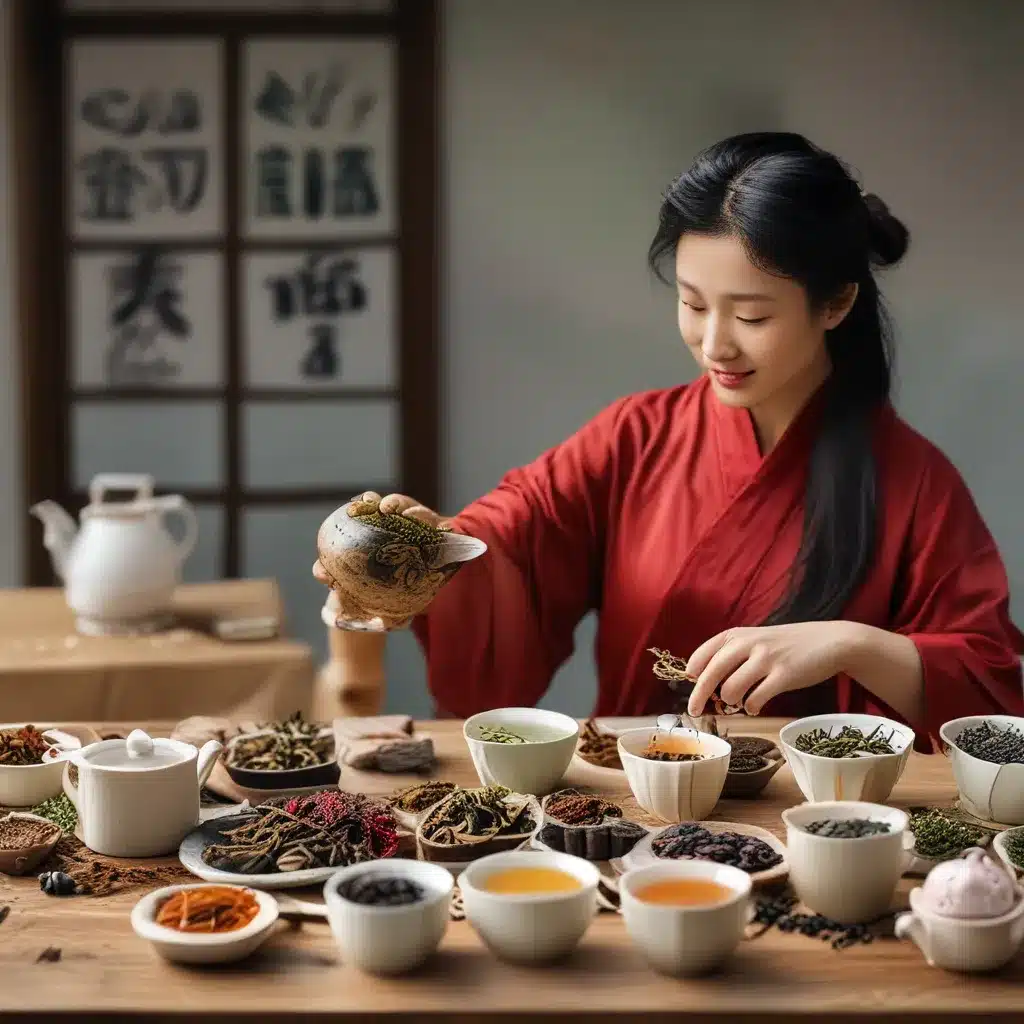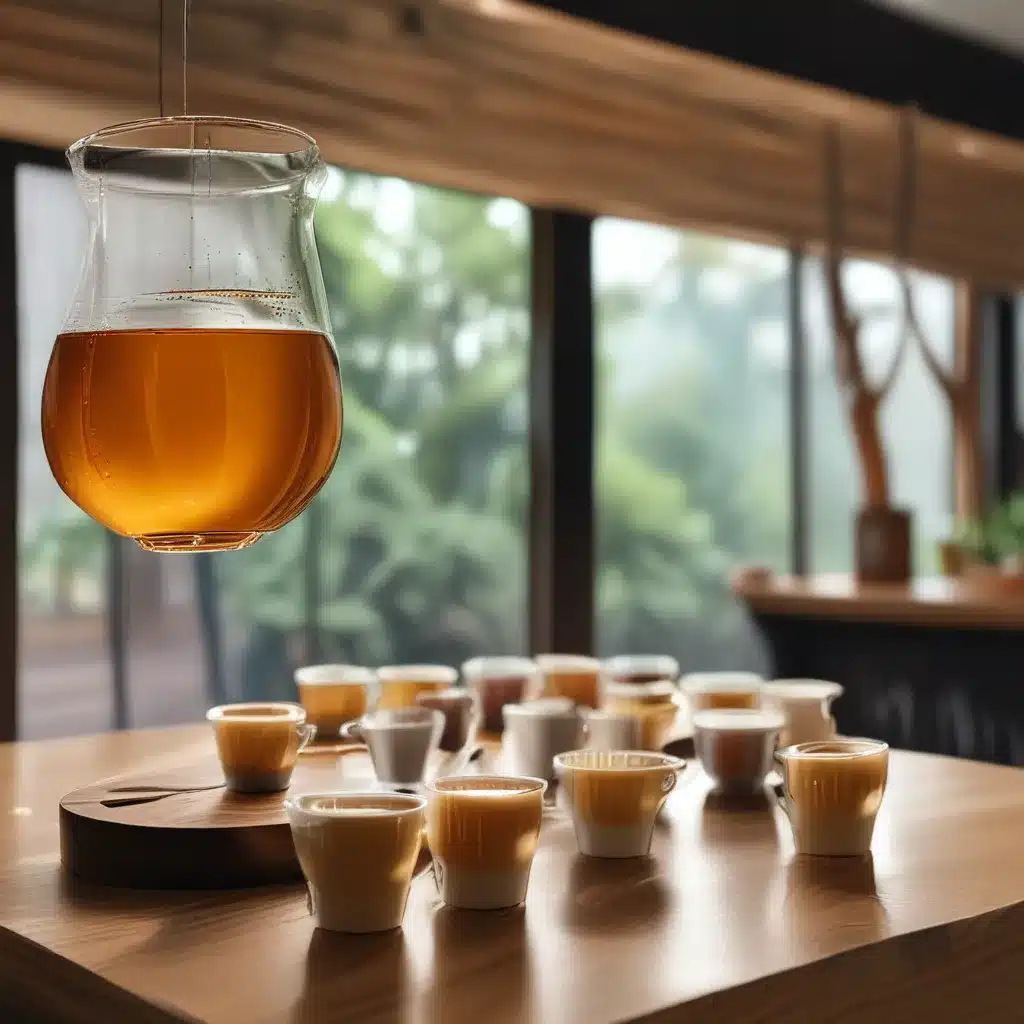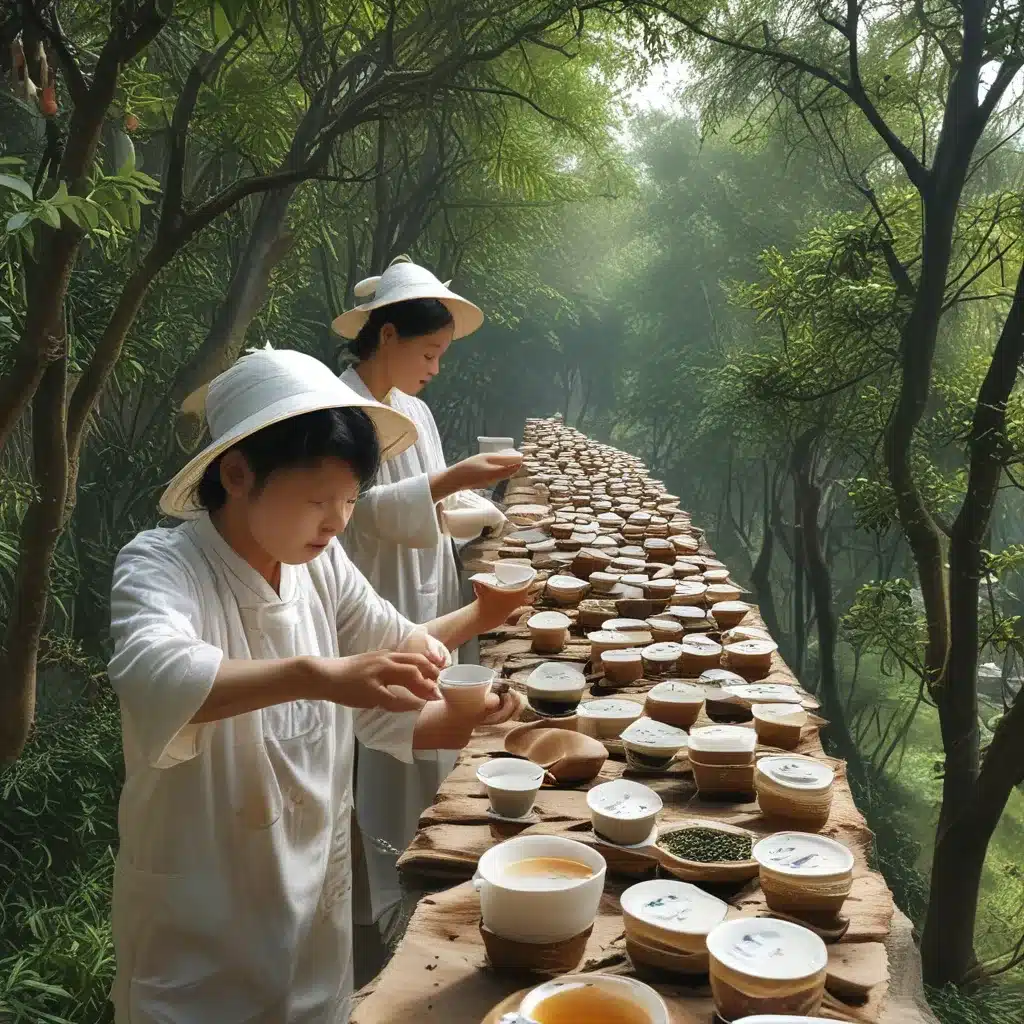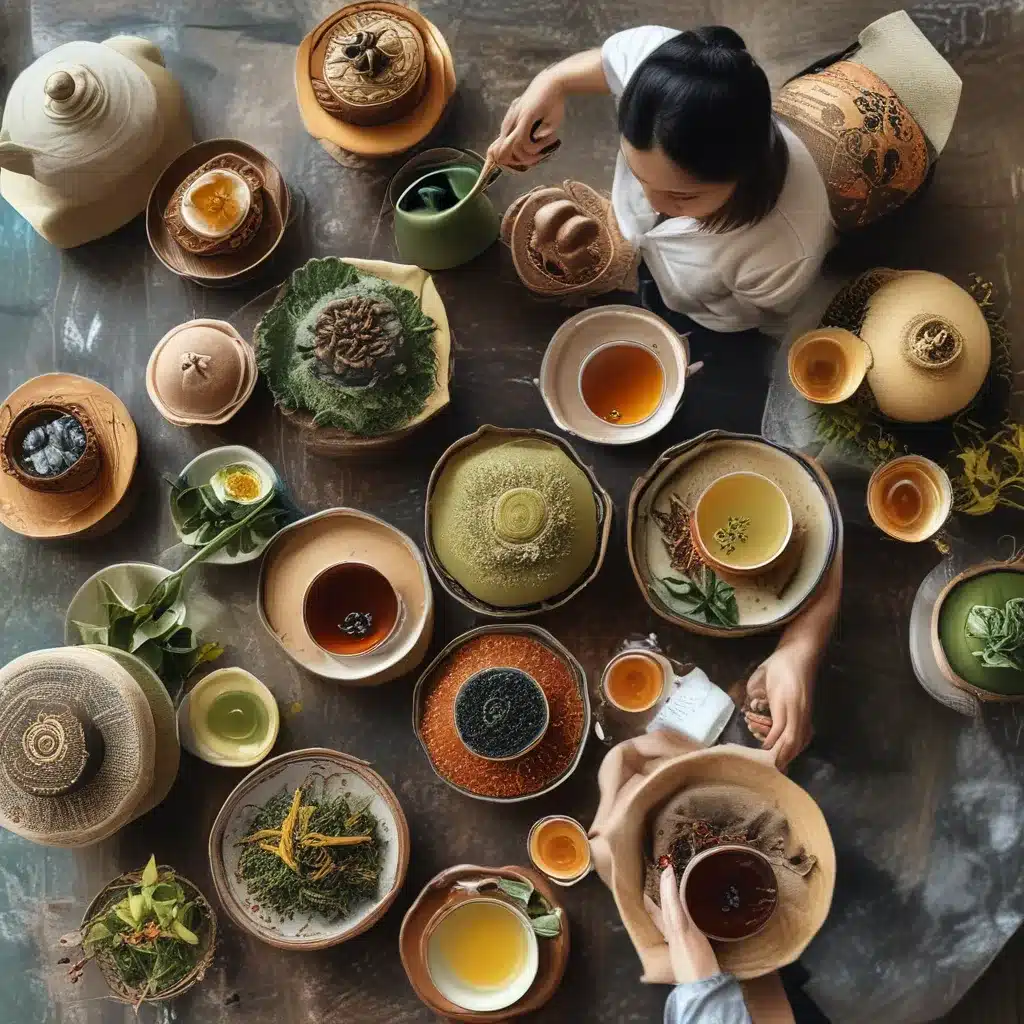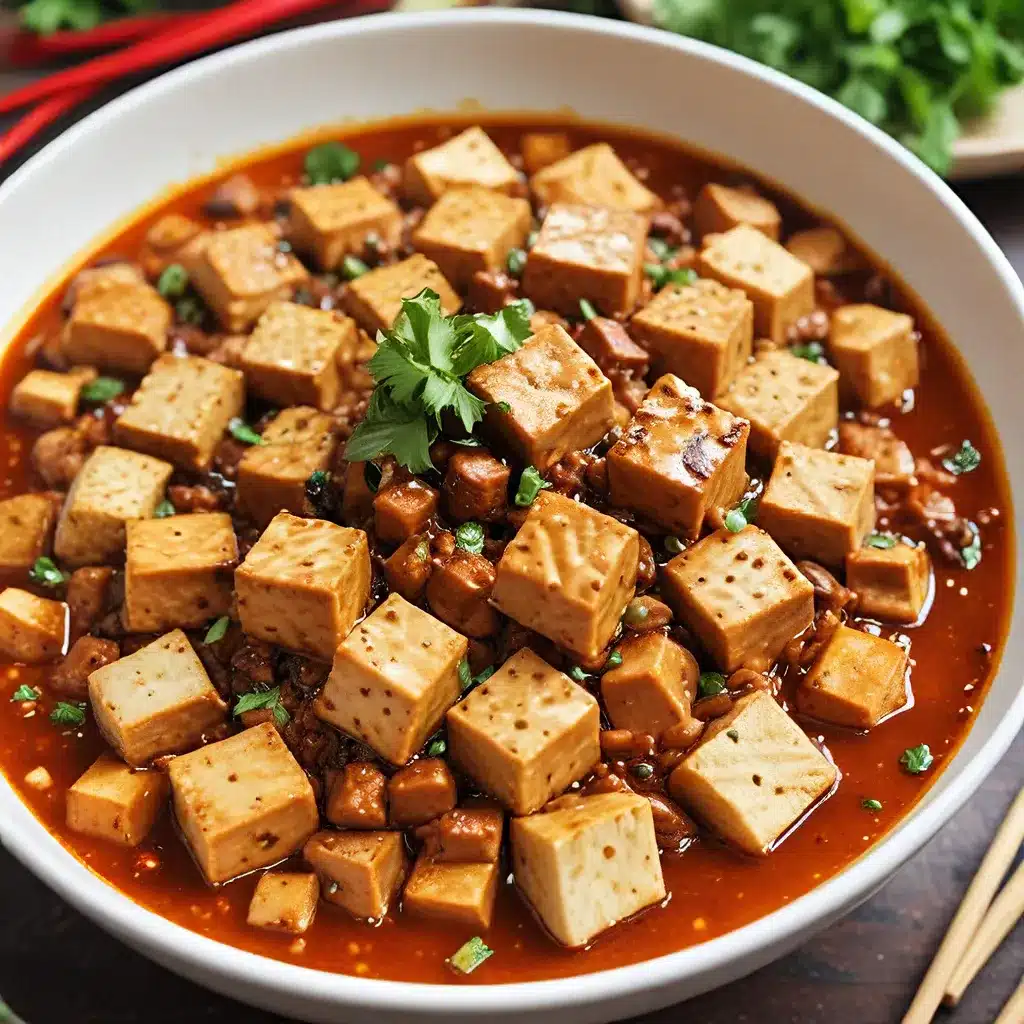
The Captivating Tale of Mapo Tofu
Sit tight, my friends, because I’m about to take you on a spellbinding journey into the heart of Sichuan cuisine – the realm of the legendary mapo tofu. This dish, with its mesmerizing blend of flavors and textures, is a true culinary marvel that has captured the hearts (and taste buds) of food enthusiasts across the globe.
Now, I know what you’re thinking: “Mapo tofu? Isn’t that just some basic tofu dish that all Chinese restaurants serve?” Oh, how wrong you are, my dear friends. Mapo tofu is so much more than that – it’s a symphony of flavors, a culinary masterpiece that has been perfected over generations. And I, for one, am on a mission to set the record straight and share the true essence of this Sichuan sensation.
You see, I’ve been on a bit of a mapo tofu kick lately. It all started a few weeks ago when I stumbled upon a recipe that claimed to be the “authentic” version. Needless to say, I was intrigued. But as I delved deeper into the world of mapo tofu, I quickly realized that most of the recipes out there were mere impostors, a pale imitation of the real deal. That’s when I knew I had to take matters into my own hands and embark on a journey to uncover the true secrets of this iconic dish.
Unveiling the Mysteries of Mapo Tofu
Now, let’s dive right in, shall we? First things first, let’s address the elephant in the room: the name “mapo tofu.” What the heck does it mean, you ask? Well, it’s actually a fascinating story that dates back centuries.
The term “ma” refers to the pockmarked appearance of the tofu, while “po” means “grandmother.” Apparently, the original recipe for this dish was created by a grandmother with a pockmarked face, hence the name. But don’t let the humble origins fool you – this dish is anything but simple.
At the heart of mapo tofu lies a delicate balance of flavors, a harmonious dance between the savory, the spicy, and the numbing. The key ingredients are Sichuan peppercorns, fermented chili bean paste (doubanjiang), and, of course, silky tofu. These components work together to create a flavor explosion that will leave your taste buds tingling with delight.
According to CookCookGo, the real secret to mapo tofu lies in the proper preparation of the Sichuan peppercorns. You see, these little gems are not your average run-of-the-mill peppercorns. They possess a unique, almost citrusy aroma and a numbing sensation that is essential to the dish. And let me tell you, the difference between using the right Sichuan peppercorns and the wrong ones is like night and day.
The Art of Crafting the Perfect Mapo Tofu
Now, let’s talk about the process of making mapo tofu. It’s not just a simple matter of tossing a few ingredients together and calling it a day. No, no, no. This dish requires meticulous attention to detail and a deep understanding of the flavors at play.
First and foremost, the preparation of the Sichuan peppercorns is key. As Lady and Pups suggests, you’ll need a blend of both red and green Sichuan peppercorns to achieve the perfect balance of aroma and numbing power. Once you’ve got that sorted out, it’s time to focus on the other components.
The fermented chili bean paste, or doubanjiang, is another crucial element that shouldn’t be overlooked. It’s the foundation of the dish, providing a rich, umami-packed base that sets the stage for the other flavors. And let me tell you, not all doubanjiang is created equal. You’ll want to source the real deal, the kind that’s been meticulously crafted by Sichuan artisans.
But the real magic happens in the final stages of the dish. As the mapo tofu simmers away, you’ll want to add a touch of rice vinegar to brighten the flavors and a drizzle of scorching hot chili oil to really amp up the heat and aroma. And the pièce de résistance? A generous sprinkle of that carefully blended Sichuan peppercorn powder, which will release its captivating scent and send your taste buds into a frenzy.
Embracing the Sichuan Spice Sensation
Now, I know what you’re thinking: “Spicy food? No, thank you!” But hear me out, my friends. Mapo tofu is not just about the heat – it’s about the complex interplay of flavors that creates a truly mesmerizing experience.
Sure, the Sichuan peppercorns and chili oil can pack a punch, but they’re not there to simply scorch your tongue. They’re there to awaken your senses, to transport you to the vibrant streets of Sichuan, where the air is thick with the scent of sizzling spices and the laughter of people enjoying a truly remarkable dish.
And let’s not forget the tofu itself, which acts as a soothing counterpoint to the bold flavors. The silky, delicate texture of the tofu provides a perfect vessel for the sauce, allowing the flavors to meld together in perfect harmony.
So, if you’ve been hesitant to dive into the world of mapo tofu, I urge you to take the plunge. Trust me, once you’ve experienced the true essence of this Sichuan sensation, you’ll never look at tofu the same way again. And who knows, you might even find yourself craving that tingling, numbing sensation that only Sichuan peppercorns can provide.
Bringing the Taste of Sichuan to Your Table
Now, I know what you’re thinking: “This all sounds amazing, but where on earth can I find these elusive Sichuan ingredients?” Fear not, my friends, for I have the perfect solution for you.
Head on over to One Dragon Restaurant, where you’ll find an extensive selection of authentic Sichuan ingredients, including the coveted Sichuan peppercorns and fermented chili bean paste. And the best part? They offer fast and convenient delivery, so you can have all the makings of a delicious mapo tofu feast right at your doorstep.
But don’t just take my word for it. Venture into the world of mapo tofu and experience the magic for yourself. Trust me, once you’ve tasted the real deal, you’ll never settle for anything less. So, what are you waiting for? Dive into the world of mapo tofu and let your taste buds be swept away by the spicy Sichuan sensation.

